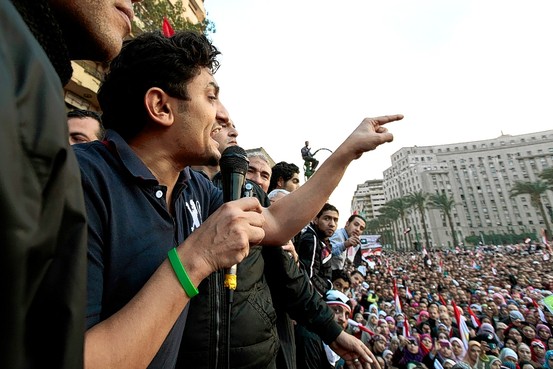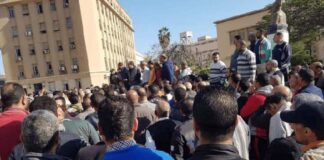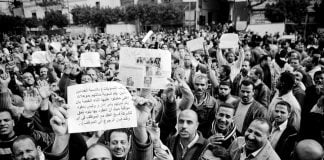Revolution 2.0: The power of the people is greater than the people in power
By Wael Ghonim
Fourth Estate
RRP $29.95
Wael Ghonim is a Google marketing manager who became one of the faces of the Egyptian Revolution.
His book is an account of his actions, working anonymously for months in fear of his life.
Ghonim identifies the beginning of the revolutionary process, not with the internet, but with the establishment of the Kefaya movement, which means “enough” in Arabic. Kefaya opposed the renewal of Mubarak’s presidency and rejected the attempt to transfer power to his son, holding its fist major protest against the regime in December 2004.

Then a strike wave began. In 2008, workers at Al-Mahalla Textiles staged a strike. They were supported by several dissident groups including Kefaya. A Facebook page supporting the strike attracted 70,000 members. Ghonim explains:
“In Mahalla, two worker activists were killed and the city briefly turned into a war zone between workers and security forces. A large outdoor poster of Mubarak was pulled down and kicked by protesters. A video of this historical moment was posted on Youtube, but of course such images could never be seen in the mainstream media…The security forces reaction was to develop a new division dedicated to policing the Internet.”
Activity
In 2010 a shocking image circulated on Facebook. It was of a 28-year-old from Alexandria, Khaled Said, beaten to death in the street by two state security officers. From his home in Dubai where he was working at the time, Ghonim established the Facebook page “We are all Khaled Said” to expose the murder and demand justice.
He recalls that, “Social media allowed us to defy the fears associated with voicing opposition…The difficult task remained, though, which was to transfer the struggle from the virtual world to the real one”.
One answer to this problem was a suggestion that people gather along the coast, holding hands to make a human line facing the sea.
Ghonim named this demonstration the Silent Stand and suggested protesters assemble the following Friday at 5pm wearing black. Despite heavy state security, Reuters reported 8,000 participated, including Khaled Said’s mother. The fear barrier had been broken.
Then Tunisia erupted in revolution and cast new light on a demonstration planned to coincide with National Police Day on January 25, 2011. “With the toppling of the Tunisian president and the mounting anger of many Egyptians who sought to replicate this situation with Mubarak, it became necessary to completely reposition the event. I found myself unable to resist the word revolution,” explains Ghonim.
Ghonim named this Facebook event “January 25: Revolution Against Torture, Poverty, Corruption, and Unemployment”. Knowing state security is determined to capture him, Ghonim nevertheless decides to return to Egypt, and participates in several demonstrations prior to January 25 before being arrested and imprisoned.
Although his Facebook page gained 350,000 ‘likes’, Ghonim has few illusions in social media and reminds readers the internet had limited influence after people gained the confidence to take to the streets.
His more recent statements, about the need for a stable economy without strikes, are disappointing. But Ghonim’s book is a thrilling account of organising under the pressure of rapidly changing events and a vicious police state.
Michael Douglas





